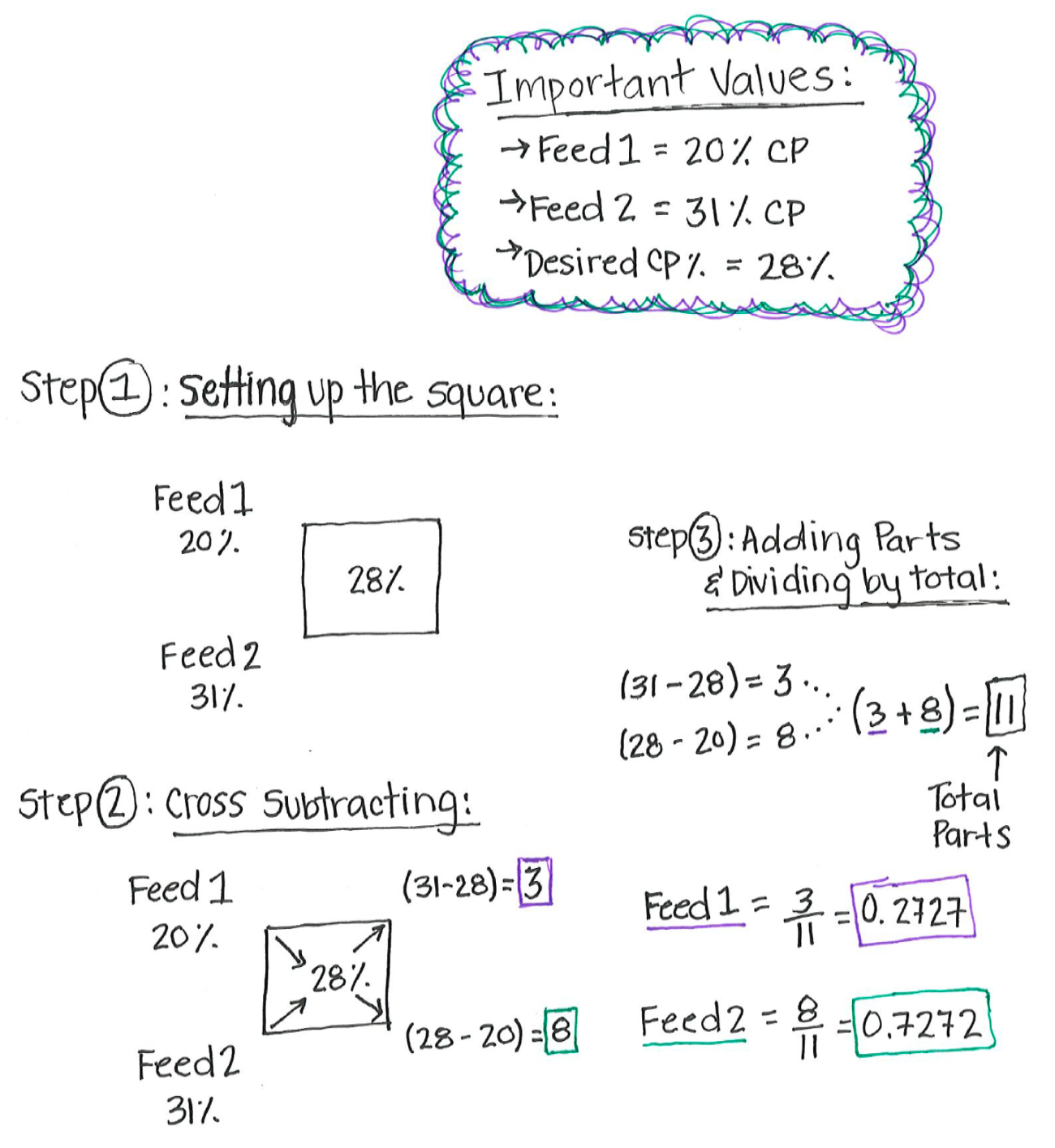The Pearson Square – the Tool for Balancing Rations
go.ncsu.edu/readext?967776
en Español / em Português
El inglés es el idioma de control de esta página. En la medida en que haya algún conflicto entre la traducción al inglés y la traducción, el inglés prevalece.
Al hacer clic en el enlace de traducción se activa un servicio de traducción gratuito para convertir la página al español. Al igual que con cualquier traducción por Internet, la conversión no es sensible al contexto y puede que no traduzca el texto en su significado original. NC State Extension no garantiza la exactitud del texto traducido. Por favor, tenga en cuenta que algunas aplicaciones y/o servicios pueden no funcionar como se espera cuando se traducen.
Português
Inglês é o idioma de controle desta página. Na medida que haja algum conflito entre o texto original em Inglês e a tradução, o Inglês prevalece.
Ao clicar no link de tradução, um serviço gratuito de tradução será ativado para converter a página para o Português. Como em qualquer tradução pela internet, a conversão não é sensivel ao contexto e pode não ocorrer a tradução para o significado orginal. O serviço de Extensão da Carolina do Norte (NC State Extension) não garante a exatidão do texto traduzido. Por favor, observe que algumas funções ou serviços podem não funcionar como esperado após a tradução.
English
English is the controlling language of this page. To the extent there is any conflict between the English text and the translation, English controls.
Clicking on the translation link activates a free translation service to convert the page to Spanish. As with any Internet translation, the conversion is not context-sensitive and may not translate the text to its original meaning. NC State Extension does not guarantee the accuracy of the translated text. Please note that some applications and/or services may not function as expected when translated.
Collapse ▲As small scale farming and homestead farms become increasingly popular in our agriculture industry, knowing how to properly formulate a mixed ration can improve the average daily gain of livestock, and increase the productivity of a farm as a whole. A mixed ration is a group of ingredients with each ingredient bringing a new nutritional requirement to the ration. The main nutrient requirement most producers single out is crude protein (CP). This is highly focused on in livestock production because protein builds muscle in the body. Therefore, the percentage of CP in any feed type is important for reaching gain requirements. When formulating a ration, the producer has the ability to increase or decrease the amount of CP found in the mixed ration. Simply put, a mixed ration allows the producer to have greater control of exactly what is being fed to their livestock. The Pearson Square comes into relevance for having the job of balancing a ration. It is most effective when only dealing with two ingredients. For example, let’s say a farmer is currently feeding feed1 a 20% crude protein feed, and he decides the protein needs to increase to 28% crude protein. How would he increase the percentage of crude protein in the feed? This can be accomplished by adding another ingredient with a higher percent protein content. Now the farmer brings in feed2 with a 31% crude protein amount. How can he determine how much of feed1 and feed2 need to be mixed together to create the desired protein amount of 28%? One answer is to use the Pearson Square method. There are only five steps in the process. Work on a 100% dry matter basis, when calculating percentages they need to be put into decimal form. Meaning you will be using a number less than 1.
- Setting up the square: two ingredients on the left side, desired CP% in the middle of the square.
- Cross subtracting: disregard the negatives; in this instance negative numbers do not exist.
- Add the two differences together on the right side of the square. Take each part on the right side of the square and divide by the total.
- Multiply the numerical outcome of step 3 by 100% to calculate the % of the ration that each ingredient will represent.
- Check calculations – should equal 100 lb total ration.
Step 5 tip: The pounds of ingredients from feed1 and feed2 should always equal 100. Multiply
feed lb by the original CP%. This calculation should give the new % of CP found in feed type 1
vs. feed type 2. The sum of the new CP% will equal the desired CP%.
The outcome of these calculations can be interpreted as:
– On a 100% dry matter basis, for this particular ration, for every 100 pound (lbs) mix 27.3
lbs come from Feed1 and 72.7 lbs come from feed2.
– Within the 27.3 lbs there is 5.46% CP and inside the 72.7 lbs there is 22.54% CP.
Making the total CP% equal to 28% (the desired CP%).






